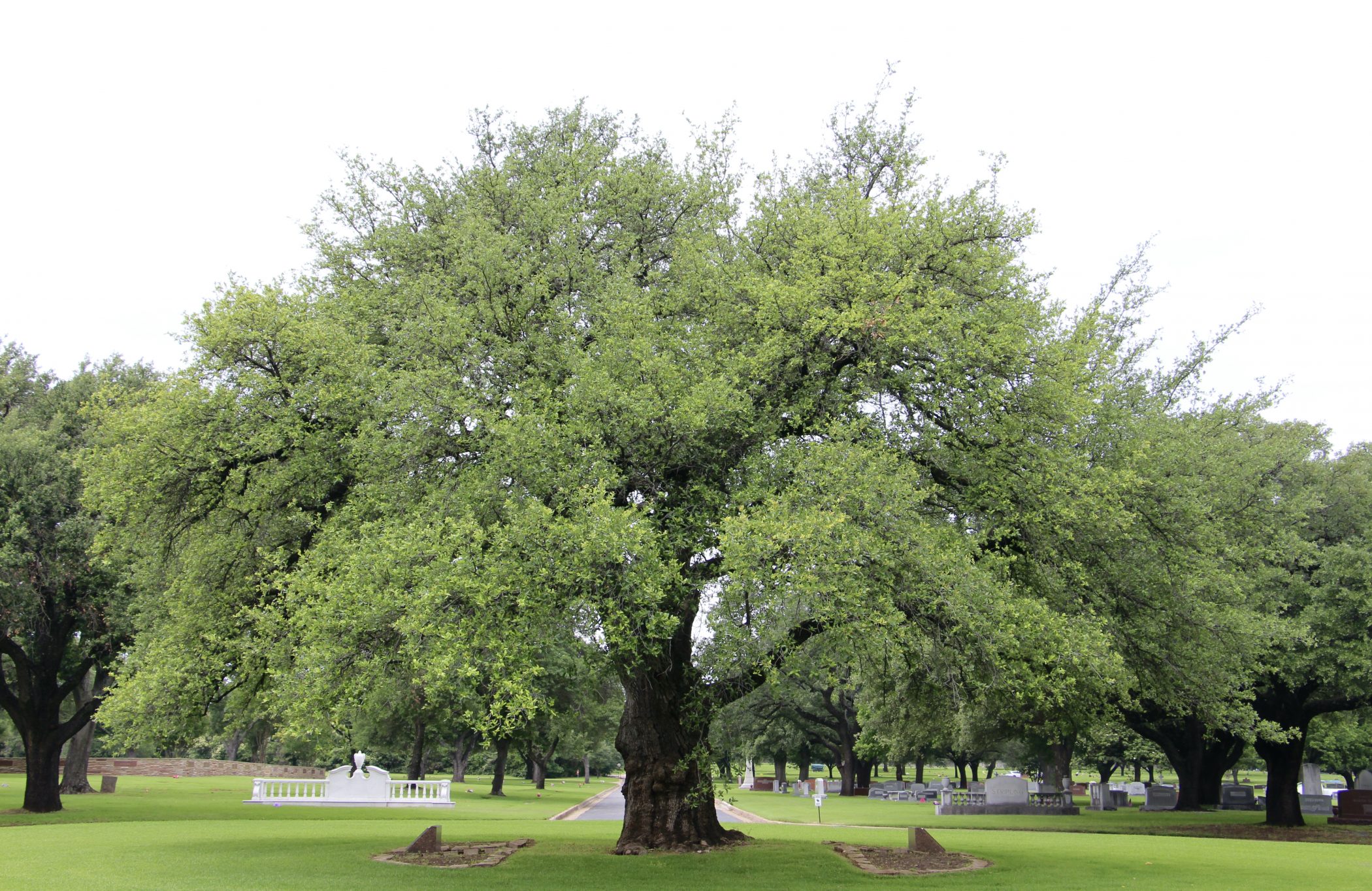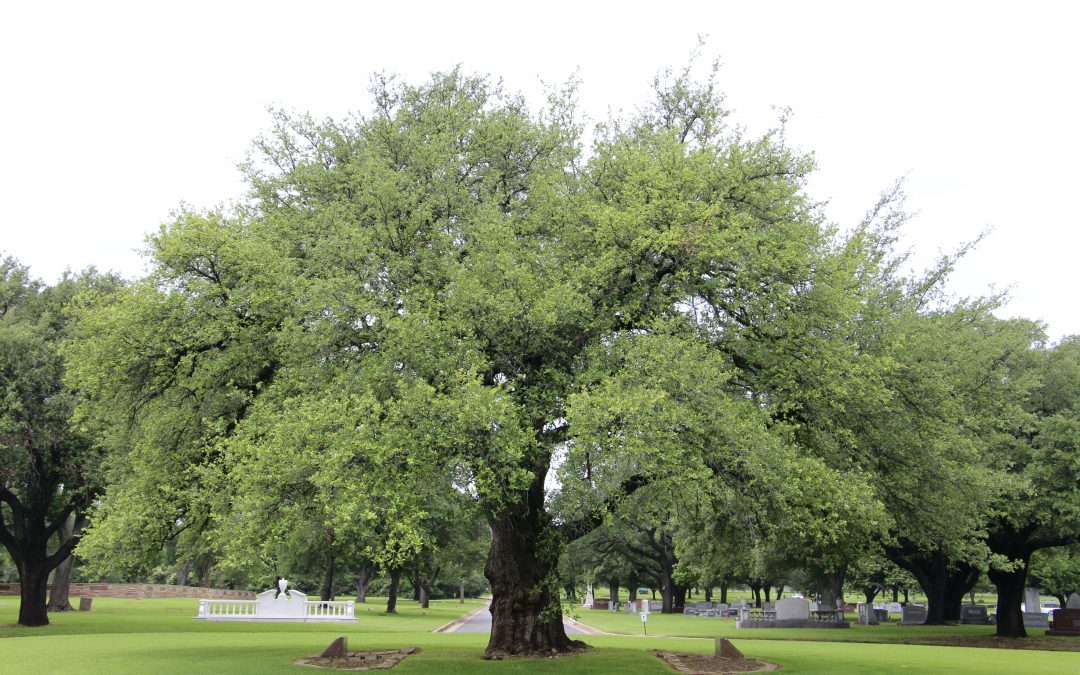Fort Worth has long promoted urban forestry practices dating back to 1873 when the city charter declared it illegal to hitch a horse to a tree. The city even hired their first arborist in the 1920’s. So, it should come as no shock that there is an assortment of trees spread throughout the city that are considered significant and are classified as Fort Worth Heritage Trees. Now, if I were to tell you there is a tree in the community that is known to exist before the Declaration of Independence OR a tree that is known to exist before the U.S. Constitution was ratified would you believe me? The Turner Oak is recognized by the state of Texas as one of Texas Famous Trees. Texas Forest Service did a core sample to date the age of the tree to over 250 years old. This tree has played an important part in the history of Fort Worth. Named after Charles Turner who was one of five men originally selected to find a location for the camp that was to become Fort Worth. Although opposed to the secession of Texas leading up to the Civil War, he supported the decision of the majority after they voted to side with the Confederacy by organizing a company of men for the war at his own expense. When the Confederacy demanded that citizens exchange their gold for Confederate currency, Turner refused and, with the help of a trusted slave, buried thousands of dollars in gold under a tree growing near the family’s home. During Reconstruction following the end of the war, Turner unearthed the gold and used it to pay off debts owed by the firm of Turner and Daggett and stabilized the local economy, allowing the City to get through a financially difficult period. This is just one of the interesting finds I found while updating the Heritage Tree webpage. The history and significance these trees have to the Fort Worth community is invaluable.

What does it take to become a Heritage Tree? The tree must be located in the Fort Worth city limits and meet at least one of the following criteria:
- Possess an unusual size, age, species significance or other characteristic that contributes to its heritage status.
- Be located on a historic site, or contribute to the history of a site.
- Serve as a well-known landmark.
- Contribute to significant community ties.
Nominations for new Heritage Trees are reviewed annually, by an independent panel, and new Heritage Trees are announced at the city’s Arbor Day celebration in November. (Nomination form on the webpage) The Heritage Tree Program helps to foster an appreciation of trees and promotes public awareness that heritage trees are a living and distinct resource for the community. If you know of a tree that meets at least one of the criteria above please take the time to nominate it. The more history and background provided, the better the tree generally scores with the panel.
I encourage you to check out the new webpage for Fort Worth’s Heritage Trees. Browse pictures, locations, and learn the history of these magnificent trees. All Heritage Trees posted on the webpage are accessible to the public. You won’t find a sign at most of the trees so be sure to check the map location and cross reference the pictures online to make sure you are at the correct one. I would love showcase pictures taken through the years on the webpage by community members. Please share your pictures with us by using the hashtag #ftwheritagetrees or emailing them to: forestry@fortworthtexas.gov.
DISCLAIMER: Photos and other support materials will become the property of the City of Fort Worth and will not be returned. Submission of photos gives the City of Fort Worth permission to use them in any and all of its publications, including website entries, without payment or any other consideration. The City of Fort Worth may edit, alter, copy, exhibit, publish or distribute submitted photos for the purpose of publicizing its programs or for any other lawful purpose.
Link to Heritage Trees Webpage: https://arcg.is/1qSnGP0
If you have any questions about this program contact: Hannah Johnson: Hannah.johnson@fortworthtexas.gov

